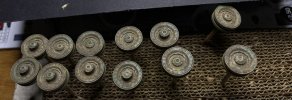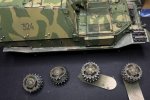Not sure of the reason for using a sprocket at either end, but only driving one, though.
Yesterday evening, I was doing some light reading in
Schwere Jagdpanzer: Entwicklung – Fertigung – Einsatz by Spielberger, Doyle and Jentz, and on page 60, happened across this diagram of the Porsche Tiger’s driveline:
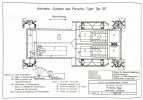
It would have been almost identical in Ferdinand, other than the generators and petrol engines being in the middle rather than the rear (
Fahrtrichtung meaning “direction of travel”, so the arrow points to the front), and the petrol engines being twelve-cylinder types instead of ten like here.
I can’t quite make complete sense of it, largely because of unfamiliarity with the symbols used, and not helped by it mixing electrical and mechanical systems in one drawing, but the lettered bits in the legend translate as follows:
G Generator
O Petrol engine (“Ottomotor” is a common German term for this type of engine, after
Nicolaus Otto who is said to have invented this type of engine)
E Electric motor
F Drive switch
R Regulator for generator’s external power generation
[R is not actually in the drawing]
U Field reversing controller
M Controller for motor’s external power generation
T Electric turret drive
[not present on Ferdinand, obviously]
The positions of the two levers are:
0°: Full forward speed
61°: Start of external power generation
100°: Complete short-circuit of main power coil
154°: External power generation at full strength, start of reverse normal power generation, application of hydraulic brakes
254°: Maximum brake position, full reverse speed
I: Generators I and II parallel
II: Starter generators I and II
III: Driving using generators I and II in series
IV: Driving using generator I
V: Driving using generator II
Notice, though, that there is something inside the idler wheels at the front of the vehicle. I first thought these might be electrical, but after studying the drawing and legend more, I think they are the hydraulic brakes that are mentioned for pulling the driving levers back 154°. This would explain the need for sprockets rather than plain idler wheels: without teeth on the idlers, they wouldn’t brake the track very much at all, just the wheels. But
with teeth, these brakes will help stop the vehicle completely.
On the next page are some diagrams comparing the Porsche Tiger’s steering to that of the Henschel design, and though it’s even harder to make sense of, what they do make clear is that when steering, the electric motor on the side being steered to, was switched to become a generator at some point — I think with the lever between 61° and 154°.
Aside from all of this, the stats table at the end of the book also makes clear why all of this was not a great success. Not only would it need huge amounts of copper for the generators and electric motors, but a quick comparison with the Jagdtiger shows it even needed more petrol even though the Ferdinand was lighter: Ferdinand held 1080 litres of fuel and could do 150 km on the road with that. Jagdtiger, despite weighing 6.5 tonnes more, could do 170 km on 860 litres …
……I got a little 1/100 Pz III on the go if your interested



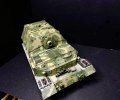
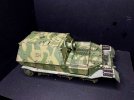
 !
!